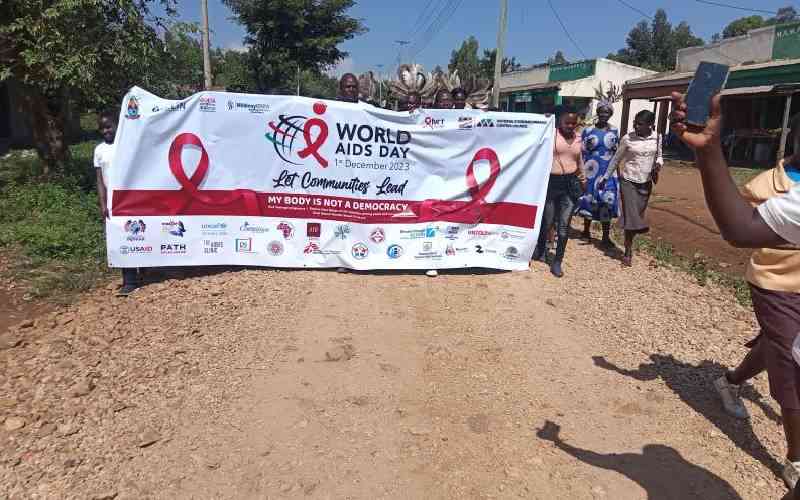
More than half of all infectious diseases in humans originate from animals.
Many of these zoonotic diseases that we hear often about, such as Ebola, Rabies, Rift Valley fever and Covid-19, are caused by viruses. Others zoonotic diseases such as such as anthrax, brucellosis and Q-fever are caused by bacterial infections.
In a recent study by Dr Josphat Muema, a research scientist at the Global Health Programme at the Washington State University and a PhD fellow at Center for Epidemiological Modelling and Analysis, Institute of Tropical and Infectious Diseases at the University of Nairobi has revealed high exposure to people and their livestock in Marsabit County to Q-fever.
Q-fever is mostly spread to humans through close contact with infected farm animals such as cattle, goats and sheep, and camels.Dr Muema noted that persons who are infected with Q-fever report flu-like symptoms like fever, aching muscles, a sore throat, and general fatigue.
"Q-fever is identified as one of top 10 priority zoonotic disease transmitted from livestock to humans in Kenya. It is a neglected disease that needs urgent attention," said Dr Muema.
"Our study results showed that Q-fever is a common disease in these livestock-keeping areas. We need to consider its impact on both animals and people. We need to be more sensitive to identify this disease during the surveillance and routine diagnosis at health facilities and veterinary diagnostic laboratories," said Dr Muema.
The disease is mainly transmitted to humans through inhalation from contaminated material of an infected animal, and contaminated environments. Consumption of unpasteurized milk or bites from infected ticks also expose humans to the disease. In extremely rare cases, the disease is transmitted from person to person.
Q-fever is common among people who closely interact with animals such as livestock keepers, and it's perceived to be an occupational hazard for those working with livestock such as abattoir workers and veterinarians.
- Olympics sees 40-plus Covid cases as global infections rise
- About 400mln people worldwide have had long Covid-19, research
- Scientists urge nations to prepare for pandemic by voting wisely
- New virus outbreak in China raises global health concerns
Keep Reading
Q-fever is highly infectious for humans and people get Q-fever mainly through inhalation of aerosols or dust contaminated with infected animal secretions including from contaminated manure, urine and animal birth products. Consumption of raw dairy products may also raise the risk of Q fever infection. The ability of the bacterial that causes Q-fever to persist in the environment for prolonged periods means that people can be infected from contaminated environments even in the absence of animal contact.
Aggregation of animals usually from different sources in areas such as abattoirs, livestock saleyards, and watering points increases the likelihood of infection in animals. The researchers obtained samples from over 1200 women and children and over 2000 animals of a mix of goats, sheep, and camels. The blood samples were tested in the lab for presence of Q-fever. The study showed that at least one out of every 10 household members had been exposed to the infection.
Among the animals, the goats had a higher prevalence of the disease. For every one hundred goats tested at least seventy had history of exposure to Q-fever. Lack of disease awareness is an important driver that increases the likelihood of infection because protective measures that prevent or reduce the incidence of infection are unlikely to be instituted.
For people to prevent themselves from Q-fever, they should practice control measures such as hygiene and use of personal protective equipment. Such measures include wearing a mask and gloves while handling animal fluids, especially birthing products and avoiding eating or drinking unpasteurized dairy products. Although not widely practiced, vaccination of those in high-risk occupational groups is the most effective preventive measure against Q-fever.
According to Dr Muema, for prevention of this livestock human disease, prevention and control strategies should be instituted incorporating human, animal, and environmental domains using the one health approach.
Q-fever prevention and control strategies should include integrated human-animal surveillance, vaccination for at risk groups, strengthening multi-sectoral collaboration, environmental management and community sensitization to help community members prevent Q-fever through risk communication to encourage individuals to refrain from risk behaviors such as sharing sleeping areas with livestock and consumption of unpasteurized dairy products.
 The Standard Group Plc is a multi-media organization with investments in media platforms spanning newspaper print
operations, television, radio broadcasting, digital and online services. The Standard Group is recognized as a
leading multi-media house in Kenya with a key influence in matters of national and international interest.
The Standard Group Plc is a multi-media organization with investments in media platforms spanning newspaper print
operations, television, radio broadcasting, digital and online services. The Standard Group is recognized as a
leading multi-media house in Kenya with a key influence in matters of national and international interest.











